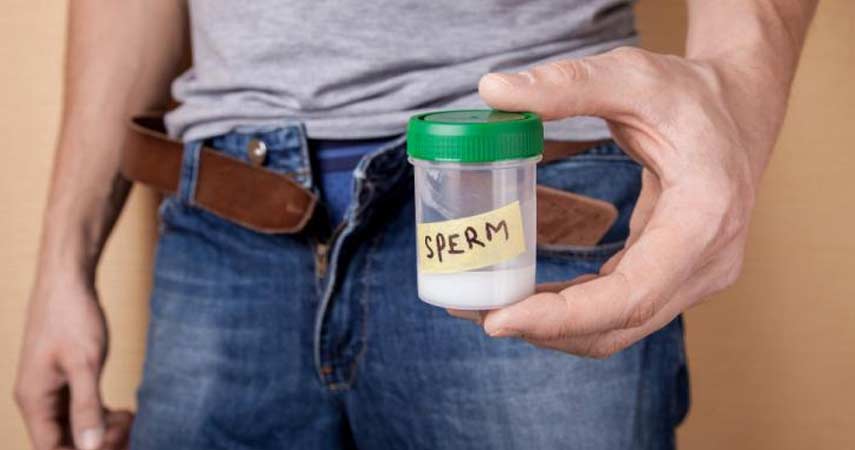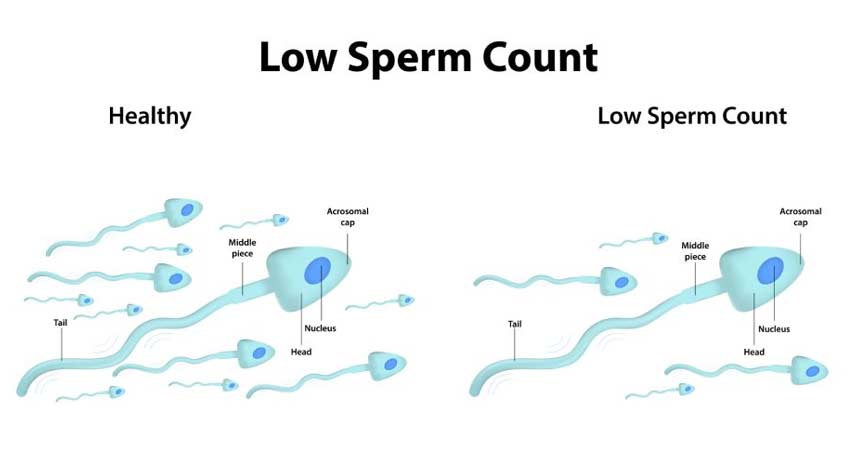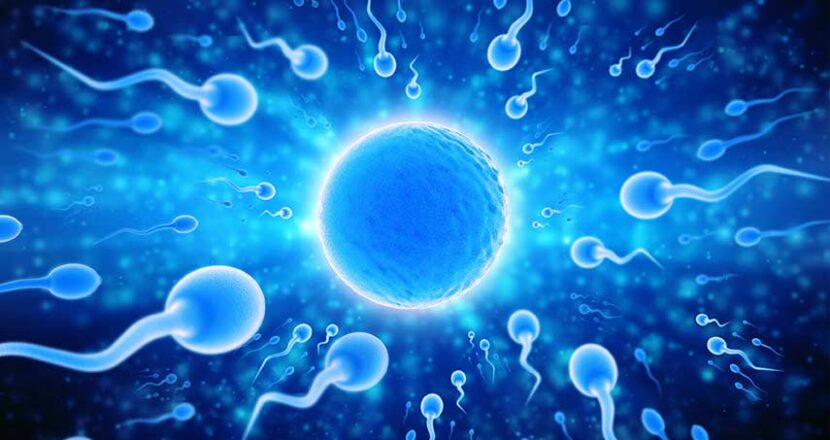There are numerous conditions that can affect the process of sperm production, as well as the quality of sperm. Understanding these conditions and how each of them affects sperm in the male body can help men better approach situations where they are diagnosed with a particular condition, and also make the man more aware of the different solutions that may be available to help them overcome the problems that are causing their infertility.
Some conditions can have an effect on the body’s ability to produce actual sperm, while others rather affect the specific qualities of sperm that are vital for successful conception.
Certain conditions affecting sperm are more common than others. In this post, we are going to look at one of the more common problems that men tend to experience when they are considered to be infertile – Oligospermia.
We would like to offer our readers a complete overview of this condition, including risk factors and causes, the diagnosis of the condition, and also consider some treatment options and alternative approaches to conception that may be utilized to allow for a successful pregnancy.
We will also consider certain prevention methods that may help to reduce a man’s risk of being diagnosed with Oligospermia, and take a look at what outlook a man may expect once they find out that this particular condition is causing them to be unable to reproduce.
The Role of Sperm in Conception
Conception is an extremely complex process that involves both a man and a woman – each gender has their own unique role to play within this process, and only when both partners are able to contribute equally to the process, pregnancy may become a reality.
The process of conception and reproducing successfully starts with the man – his sperm, to be more accurate. Fertility Authority[1] explains that the sperm produced in a man’s body is one of the most vital parts of pregnancy, and is required to move toward an egg in the woman’s body, then break through the protective coating that surrounds the egg, in order to fertilize it.
According to Mayo Clinic[2], when the quality of sperm is analyzed, one needs to look at three particular properties of a man’s sperm. This includes the sperm volume, the sperm movement and the sperm morphology. All three of these factors are equally important in allowing conception to be possible.
- Sperm Volume – This term refers to the amount of sperm cells that are contained in a single ejaculate. For sperm to be considered healthy, more than 15 million cells need to be present per milliliter of sperm that a man ejaculates when he has an orgasm.
When too little sperm cells are present in a man’s ejaculate, then there would be an insignificant amount of “candidates” that may reach an egg in the female body and fertilize the egg.
- Sperm Movement – The movement of sperm is also important in conception, and describes how many sperm cells in the ejaculate of a man moves. More than 40% of the sperm cells found in a man’s ejaculate needs to move for the sperm to be considered healthy.
- Sperm Morphology – Another important factor is the sperm structure. Healthy sperm should ideally have round heads and longer tails.
This particular factor does not play as significant of a role in sperm quality as the movement and volume of the sperm in a man’s ejaculate does, but should still be taken into account as a better structure allow the sperm cells to move easier and infiltrate the egg in the female body more easily.

An Overview of Oligospermia
In this post, we will be looking at one specific condition that can have a significant impact on a man’s fertility, and even lead to unsuccessful contraception due to the effects it has on the sperm quality of a man.
The condition is known as Oligospermia and is considered to be one of the most common issues to leads to male infertility and compromise a couple’s chance of conception and becoming new parents.
Healthline[3] explains that the term Oligospermia is used to describe an insufficient sperm count in a man’s ejaculate.
Sperm volume is one of the most important factors that contribute to male fertility, as we have explained previously; thus it is quite obvious that Oligospermia can be quite unpleasant for a man – and for a couple who is trying to become parents.
There are a variety of factors that can contribute to a lower sperm count in a man’s semen, but it is often difficult to determine exactly what may be causing the condition in a particular male patient without performing additional tests.
Let’s dive deeper into this condition by looking at various aspects related to what causes the condition, how it can be diagnosed and treated, and how men may implement certain lifestyle habits and changes to improve the quality of their sperm.
What Causes a Man to Develop Oligospermia?
Oligospermia is a condition that affects fertility which has several potential causes and risk factors associated with it. For this reason, it is important for a man to see a professional in order to gain an accurate diagnosis, and to undergo additional tests to determine what exactly is the cause behind the particular patient’s Oligospermia.
This will provide assistance with identifying the best approach to treating the problem and potentially increasing the man’s sperm count.
Some factors that may cause or contribute to a low sperm count in men include:
- Varicocele – This is a condition where there is a vein that becomes enlarged in the scrotum of the affected man. In turn, the enlarged scrotum has a negative impact on blood flow toward the man’s testicles. In turn, the temperature of the testicles increases, which then causes problems with the production of sperm. Varicocele is one of the most common problems amongst men diagnosed with Oligospermia, being the cause behind as much as 40% of men diagnosed with the condition.
- Infections – Certain types of infections, especially those classified as sexually transmitted infections, are sometimes the cause behind Oligospermia.
- Medication – In some cases, medication has also been found to cause a low sperm count in men. Some particular types of medication known to contribute to Oligospermia include some antibiotics, beta blockers and certain type of drugs used to treat blood pressure problems.
- Increased Temperature – Just as with varicocele can increase the temperature of the testicles, many other issues can also lead to an increase in the temperature of a man’s testicles.
Placing a laptop on your groin area, for example, is known to cause a significant increase in temperature in the area. In turn, this can have a negative impact on sperm production.
- Retrograde Ejaculation – Certain ejaculation problems can also be detrimental to a man’s fertility and sperm production. Retrograde ejaculation, in particular, is known to greatly contribute to issues with sperm.
- Hormone Problems – Some problems with the production of hormones may also have an effect on the production of sperm in the testicles. A reduction in testosterone production, for example, may have a negative impact on the sperm production function of the testicles.
- Obesity – Obesity is a risk factor that greatly contributes to sex-related issues, as well as infertility. Generally, men who are obese often suffer from a lower sperm count than men who are not obese.
- Alcohol and Drugs – The use of certain drugs, such as cocaine and marijuana, is also known to contribute to a reduction in a man’s sperm count.
Furthermore, it has also been found that cigarette smoking can also have a detrimental effect on a man’s fertility due to the fact that it reduces a man’s sperm volume in his ejaculate.
Does Oligospermia Cause any Symptoms?
Unfortunately, there are no physical symptoms that can provide a man with a sign that he may be suffering from Oligospermia. The only symptom that may be considered a signal of Oligospermia would be when the man continuously has sexual intercourse with his female sexual partner with the goal of reproducing, but without any success.
Not being able to conceive successfully, however, does not necessarily indicate Oligospermia, but may rather be caused by another condition – and it should also be noted that the problem with fertility does not always affect the man, but may also affect the woman in the relationship as well.
For this reason, when pregnancy does not seem to be happen naturally, it is important for a couple to seek the advice of a healthcare professional, who will be able to provide more insight into the situation to help the couple determine who is suffering from infertility and what exactly is causing the problem they are experiencing.
How is Oligospermia Diagnosed?
When a man and a woman try to become pregnant and it does not seem to happen naturally, through sexual intercourse, then the next step is to see a healthcare provider – usually one who specializes in family planning and fertility-related issues.
Such a healthcare provider would be able to perform several tests on both the man and the woman in order to find out which individual in the relationship is experiencing fertility problems, and to point out what particular condition is causing the infertility in the affected individual.
When observing the man’s fertility rate, the healthcare provider will usually start by requesting a semen sample from the man. This sample is then sent to a laboratory in order to determine how healthy the man’s sperm is.
The laboratory will take a look at the three different qualities of sperm we have mentioned earlier in this article, and try to identify an issue with any of these particular qualities.
According to the Mayoclinic[4], a man should have about 15 million sperm cells present in each one-millilitre semen he ejaculates. Should the laboratory results indicate that the sperm volume of the man is lower than this amount, then the man will be considered to suffer from a low sperm count, and he will be diagnosed with Oligospermia.
The diagnosis of this condition is the first step to implementing certain treatment options to potentially improve the man’s sperm count and help him become fertile – which is required for the man to be able to reproduce.
It should be noted that there are three different types of Oligospermia that a man can be diagnosed with. Each of these vary in severity; thus it is important to know which category a particular patient falls in since this will have a significant impact on whether or not treatment options may be available to the man. The three particular types of Oligospermia that a man can be diagnosed with include:
- Mild Oligospermia – This is when the man’s sperm count falls between ten and 15 million sperm cells per milliliter semen.
- Moderate Oligospermia – This is when the man’s sperm count falls between five and ten million sperm cells per milliliter semen.
- Severe Oligospermia – This is when the man’s sperm count falls between zero and five million sperm cells per milliliter semen.
Treatment Options and Solutions for Patients with Oligospermia

The diagnosis of Oligospermia is often very unpleasant for a man, as well as for his female sexual partner since this means conceiving will be much more difficult.
Fortunately, several treatment options and procedures are available to help men overcome this issue and increase their sperm count. It should, however, be noted that when a man is diagnosed with severe Oligospermia, then treatment would be much harder and, some cases, the procedures available might not be able to restore the man’s sperm count to normal levels.
Before an appropriate treatment plan can be discussed with a patient, the patient first needs to undergo certain tests.
This is why the diagnosis of Oligospermia is so important. During diagnosis, the healthcare provider needs to confirm that a low sperm count is the actual condition that is causing the low sperm count in the patient, and also determines how serious the issue is – this is done by looking at the sperm count of the man and then placing his Oligospermia into a category, which we have discussed previously in this post.
Once these factors have been determined, the next step is to also identify the cause of the male patient’s condition. This is a very important step to help a healthcare professional determine the best process of treating the condition.
The treatment that would be provided to a man will depend on the cause behind the Oligospermia he was diagnosed with.
Male Fertility & Sexual Medicine Specialists[5] explain that some treatment options that may be provided to a man, depending on why he is experiencing the condition, include:
- When the man suffers from varicocele, then he may need to undergo surgery in order to treat the problem.
- Should an infection be the cause of the low sperm count in the male patient, which often occurs within the reproductive or urinary tract of the male patient, then a healthcare provider may treat the problem by prescribing the man certain antibiotics in order to treat the infection. When the infection clears up, his sperm quality may return to normal.
- In cases where an imbalance in hormone levels, such as low testosterone levels, are causing the issues with the patient’s sperm production, a healthcare provider may recommend hormone therapy in order to correct the hormone levels in the patient’s body.
Note that, in some cases, sperm count may not be elevated through treatment options. This is usually the case when Oligospermia is more severe, and when the male patient’s sperm count is extremely low. In such cases, the man may be offered alternative conception methods in order to help him and his partner become parents.
What Complications Can be Caused by Oligospermia?

Oligospermia does not cause any specific complications that may impact a man’s wellbeing, but it should be noted that the effects of the condition can have other effects on the man’s life that does not necessarily affect his health.
The most obvious complication would be the fact that a low sperm count causes infertility. This means that the man would be considered infertility and it would be much more difficult for him to become a parent, as compared to a man who has a normal sperm count.
The fact that the man would not be able to reproduce successfully can also have an effect on his relationship with his partner. If the man is the problem with fertility, and no alternative options are available to make conception possible, then the partner may wish to opt for sperm from a donor or even decide to leave the man and seek out someone who would be able to reproduce without any problems.
Additionally, a man’s mental wellbeing may also be affected by Oligospermia in some cases, as not being able to reproduce and having to go through numerous treatment options in order to potentially help him regain his normal sperm count – with no guarantee that these treatments would actually work – can be depressing.
Are there any Ways to Prevent Oligospermia?
The prevention of Oligospermia may be possible in many cases. The first step to preventing this condition is to take a look at the particular risk factors that have been associated with the condition.
Should a man be exposed to any of these risk factors, he should consider making some lifestyle changes in order to minimize these risks.
For example, if the man is currently smoking cigarettes and consuming an excessive amount of alcohol, then quitting smoking and reducing alcohol intake may help to prevent Oligospermia.
Living a healthy lifestyle that includes a diet rich in vegetables, fruit, nuts and other food choices that are good for the body, as well as avoiding unhealthy foods, is also important. Such a lifestyle should be combined with regular exercise routines for the most effective benefits.
Outlook for Men with Oligospermia

The outlook for a man diagnosed with Oligospermia depends on several factors, such as how severe the condition is in the particular patient and what the cause is. The lower the sperm count of a man diagnosed with the condition, the more difficult it would be to treat.
When the cause is treatable, such as when caused by an infection, then the outlook may also be more positive when the appropriate treatment measures are administered to the patient in a timely manner.
Should problems like a direct injury to the testicles be the cause behind the issues with the man’s sperm, however, then the outlook may not be as positive, or the time it would take to improve the man’s fertility might at least take a significantly longer period of time.
Read More: Asthenozoospermia: What is it & How to Diagnose Asthenozoospermia?
Conclusion
Sperm can be viewed as the essence of life, forming an essential part in conception. Without healthy sperm, a man is often considered to be infertile; thus classifying him as being unable to reproduce.
This can become a serious issue in a relationship where both partners are looking to become parents, but certain medical options are available to assist men who are not considered as fertile to improve their fertility rate and potentially become a parent, even when certain conditions are affecting their body’s ability to produce sperm, or the quality of the sperm produced within their body.
In this article, we looked at Oligospermia, a common condition that can lead to male infertility due to the effects the condition has on sperm in the male body.
We provided a comprehensive overview of what Oligospermia is, what causes the condition to develop and how doctors are able to diagnose a man with the condition.
We also analyzed the various treatment options that men may be presented with when they are diagnosed with Oligospermia, and considered some alternative methods of conception that may be useful should certain procedures not be able to improve their symptoms. Education about this condition is essential, especially for men who are finding it difficult to reproduce successfully. One of the best alternative is to use a device that uses a simple traction technique to naturally increase the size of the manhood. In Quick Extender Pro Reviews, we documented that it is designed using completely hypoallergenic materials such as medical-grade synthetics and aluminum to make it safe, comfortable, and incredibly durable.
Knowing what may cause the condition, as well as what options are available to pose as possible solutions, help a man realize what type of approach they should take and may also assist them with identifying potential risk factors in their life that may be contributing to a higher risk of developing Oligospermia.
Feature image: Shutterstock.com
In-Post Image: Shutterstock.com & Slideshare.net









 This article changed my life!
This article changed my life! This article was informative.
This article was informative. I have a medical question.
I have a medical question.
 This article contains incorrect information.
This article contains incorrect information. This article doesn’t have the information I’m looking for.
This article doesn’t have the information I’m looking for.